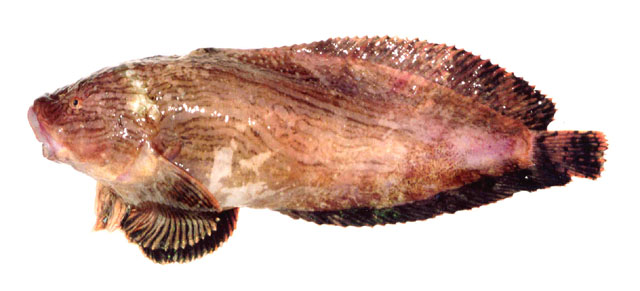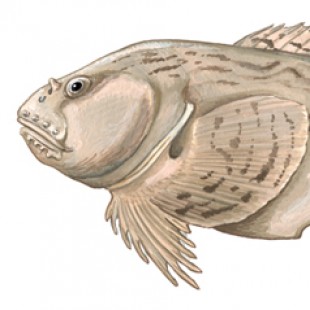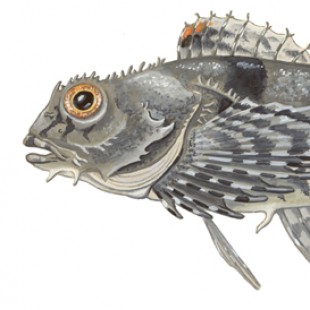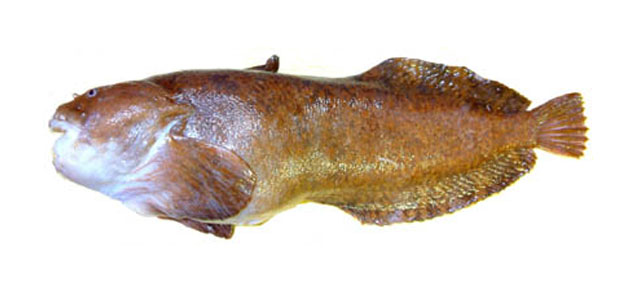
Liparis fucensis
FAMILY
Liparididae
TAXONOMY
Liparis fucensis Gilbert, 1895, Strait of Juan de Fuca, 109 fathoms.
Is classified sometimes within the Cyclopteridae, and the
FAMILY
name Liparididae was formerly Liparidae.
OTHER COMMON NAMES
English: Juan de Fuca liparid.
PHYSICAL CHARACTERISTICS
This snailfish grows to 7 in (18 cm) and has a lobe at the
front of its dorsal fin and the anal fin barely extending onto
the tail fin. Color is from brown to olive. Like other snailfish,
it has a tadpole shape to the body, large pectoral fins
with extended lower rays, and a small pelvic suction disc.
Larvae become spherical in a globular bubble of body fluid
beneath the skin. Immediately upon settlement there is a
metamorphic change (shrinkage) to a snailfish shape like a
tadpole.
DISTRIBUTION
Northern California to southeast Alaska.
HABITAT
Has been collected over a wide range of depths from the shore
down to 1,270 ft (388 m).
BEHAVIOR
The larval stage grows for an extended period in the planktonic
realm by means of neutral buoyancy conferred by the
globby, bubble shape of the body.
FEEDING ECOLOGY AND DIET
Small crustaceans including shrimp.
REPRODUCTIVE BIOLOGY
The male slipskin snailfish guards a cluster of egg masses inside
an empty mussel shell during spring. Egg color varies between
egg masses, from tan to pink or orange.
CONSERVATION STATUS
Not listed by the IUCN. This snailfish is relatively common in
occurrence.
SIGNIFICANCE TO HUMANS
None known.
Other popular Animals
Photo Gallery of - Slipskin snailfish





 Animalia Life
Animalia Life